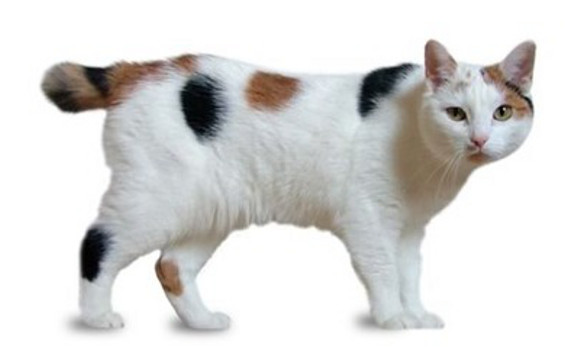History of the Manx Cat
The Manx cat breed has a rich history, originating from the Isle of Man, located in the Irish Sea between England and Ireland. The absence of native feline species on the Isle suggests that domestic cats were introduced by settlers and explorers. While the exact timeline and origin are unclear, several legends attempt to explain the Manx’s presence. One tale suggests that cats from a shipwrecked Spanish Armada in 1588 swam ashore. Another story attributes their arrival to Phoenician traders who brought cats from Japan, while a third claims Viking settlers introduced them.
Despite the entertaining legends, geneticists believe that the Manx’s distinct taillessness resulted from a spontaneous mutation in the island’s cat population. Unlike other short-tailed breeds governed by recessive genes, the Manx’s tail, or lack thereof, is controlled by a dominant gene and modifying polygenes. This mutation spread easily due to the island’s closed environment and small gene pool.
Modern History
The modern history of the Manx is well-documented. The breed gained popularity before the early days of cat fancy. King Edward VIII was a notable admirer, frequently attending cat shows featuring Manx cats. The first Manx club was formed in Britain in 1901. Manx cats made their way to America over a century ago, with early records showing their presence in American cat registries.
Initially, Manx cats were exported from the Isle of Man, but as demand grew, breeders had to rely on British and American sources. Due to the breed’s breeding difficulties, show-quality Manx cats are rare, though pet-quality Manx cats are more accessible.
Unique Characteristics and Personality
The Manx’s personality has contributed significantly to its popularity. These cats are intelligent, active, and affectionate, making them excellent household companions. Manx cats are known for forming strong bonds with their owners and getting along well with other pets, particularly dogs. They enjoy playing fetch and are fascinated by water—on their terms, of course.
Manx cats are exceptional jumpers, thanks to their powerful back legs. Their unique gait, often referred to as the “Manx hop,” resembles that of a rabbit. Some breeders believe this gait is due to skeletal abnormalities related to the Manx gene, while others attribute it to the breed’s short back and long hind legs.
Breeding Challenges and Health Issues
Breeding Manx cats is particularly challenging due to the Manx gene. Homozygous Manx kittens, which inherit the gene from both parents, often die early in development. As a result, Manx litters are typically small, averaging two to four kittens. Even heterozygous kittens, which inherit the gene from one parent, have a higher mortality rate and are prone to deformities such as spina bifida and spinal fusions.
To minimize health issues, breeders must practice careful breeding. The Manx standard disqualifies any cat with congenital deformities, ensuring that only healthy cats are bred. However, all Manx cats possess one copy of the Manx gene, leading to various tail lengths.
Tail Classifications
Manx cats are classified into four tail types:
- Rumpy: Completely tailless, often with a dimple at the spine’s base.
- Rumpy-Riser: Short knob of tail with one to three vertebrae connected to the spine’s last bone. Allowable in shows if the vertical rise does not stop the judge’s hand when stroked.
- Stumpy: Short tail stump, often curved or kinked.
- Longy: Almost as long as an average cat’s tail. Breeders sometimes dock these tails for easier placement in homes, though this practice is controversial.
Show-quality Manx cats are hard to come by, as they must also meet criteria for body and head type, legs, ear set, and coat quality.
Care and Maintenance
Manx cats are relatively easy to care for, though they do have specific needs. Their grooming requirements are moderate, as their double coat requires regular brushing to prevent matting. Due to their playful and active nature, Manx cats benefit from ample playtime and mental stimulation.
Health and Wellness
While Manx cats are generally healthy, they can be prone to certain genetic issues related to their taillessness. Regular veterinary check-ups are essential to monitor and address any potential health concerns early.
Manx Cat Ratings
- Activity: ★★★★☆
- Playfulness: ★★★★★
- Need for Attention: ★★★★☆
- Affection: ★★★★★
- Need to Vocalize: ★★★☆☆
- Docility: ★★★★★
- Intelligence: ★★★★★
- Independence: ★★★★☆
- Healthiness and Hardiness: ★★★☆☆
- Grooming Needs: ★★★★☆
- Good with Children: ★★★★★
- Good with Other Pets: ★★★★★
Conclusion
The Manx cat breed is a unique and charming addition to any household. With their distinct appearance, playful nature, and strong bond with humans, they make wonderful pets. However, potential owners should be aware of the breed’s specific health needs and breeding challenges. By understanding and meeting these needs, Manx cat owners can enjoy a loving and rewarding relationship with their feline companions.

